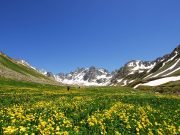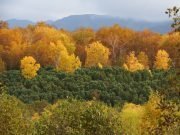Since the creation of the world, many living environments have been formed on earth. From the habitat of this smallest creature, oceansconstitutes a wide spectrum.
These different habitats on Earth form their own ecosystems. Ecosystems constitute components in a certain area and have their own physical and chemical properties. For example, forest ecosystem, aquatic ecosystem, desert ecosystem, grassland ecosystem etc. Systems can be of different sizes. Sometimes they cover a very small area, sometimes they cover continents. For example, the world is the largest ecosystem. Regardless of their size, every ecosystem is perfect in itself. All elements are unique as they are part of the system. Many commonalities are noticed when the ecosystem is compared to the body system. For example, without the heart, stomach, brain or blood circulating in the veins, it would not be possible to live because the body system would go bankrupt. The same can be said for the ecosystem; Without one of the elements, the system cannot function and breaks down.
Ecosystems are different from each other. The feature of the system in that system water, air, light, humidity, wind such as inanimate objects. Each ecosystem also contains various elements within itself. For example, while birds, plants, trees and microorganisms form the forest ecosystem; seas, fish, stones and algae form the aquatic ecosystem.
living beings themselves according to their chemical and physical properties They cannot live in every ecosystem because they choose and adapt to their environment. For example, a cactus cannot live in the Arctic, a penguin in Africa, or a lion in the ocean, etc. Cacti adapt to warm areas because they can store water in their bodies for a long time. Camels also have body structures that can adapt to the desert environment for a long time. It is possible to say the same parallels for penguins. Penguins have a thick layer of fat on their bodies that allows them to live at very low temperatures.
Although ecosystems differ, their components do not change. In every ecosystem there are basic components consisting of autotrophs, heterotrophs, natural environment and decomposers (bacteria and fungi). Life in ecosystems continues with energy flow and nutrient cycles. The energy flow continues unidirectionally from the sun to autotrophs, heterotrophs and decomposers, respectively.
What is the Energy Source of the Ecosystem?
The only energy source of the ecosystem is the sun. The energy flow begins with the photosynthesis of the sun's rays by autotrophs. Hetetrophs consume the autotrophs that develop by photosynthesis and take energy. The wastes of heterotrophs are assimilated into the highest energy by the decomposers group formed by bacteria and fungi. Decomposers either give the energy they receive to microorganisms that feed on them or store them in the soil. As can be seen, every living thing is dependent on the previous system component. The continuity of the system depends on the continuous photosynthesis of the producers.






























